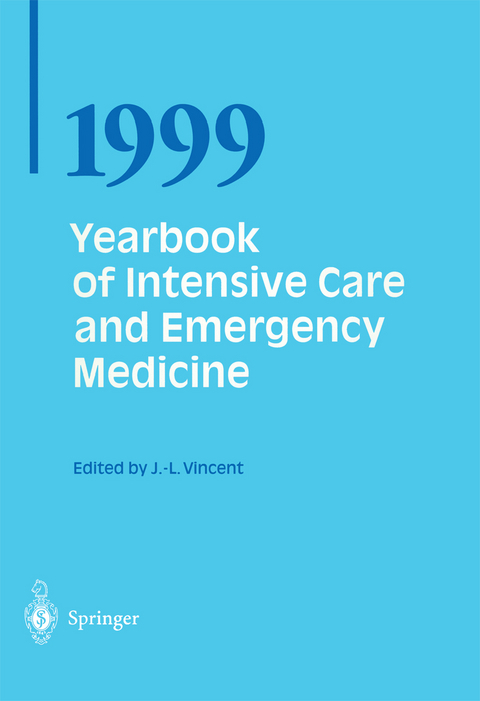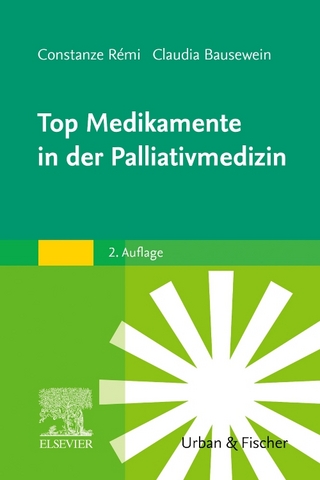
Yearbook of Intensive Care and Emergency Medicine 1999
Springer Berlin (Verlag)
978-3-540-65288-5 (ISBN)
Predisposition to Critical Illness.- Prevention of Critical Illness: Determinants of Risk.- Pro-Inflammatory Cytokine Genomic Polymorphism and Critical Illness.- Immunologic Responses.- Bacterial Modulation of the Immune Response to Infection and its Consequences.- Treating Immunologic Instability: A Change in Focus.- Interleukin-6 in Bacterial Infection and Sepsis: Innocent Bystander or Essential Mediator?.- Complement Activation by C-Reactive Protein: An Inflammatory Mechanism in Human Disease?.- Influence of Nutrition on Mucosal Immunity.- Metabolic Support.- Studies of Protein and Amino Acid Metabolism in the Human Liver.- Anabolic Strategy in ICU Patients: Is there a Place for Growth Hormone?.- Controversies in Nutrition of the Critically Ill.- The Hemodynamic Response to Enteral Nutrition.- Infectious Challenges.- Clinical Significance of Antimicrobial Resistance.- Colonization and Infection with Pseudomonas aeruginosa in Intensive Care: Endogenous or Exogenous Origin?.- Severe Pneumonia in the Elderly.- The Role of Pulmonary Bacterial Infections in Severe Exacerbations of COPD Patients.- Treatment of Septic Shock.- Volume Kinetics: A New Method to Optimize Fluid Therapy.- Why, When, and How I Use Norepinephrine in the Treatment of Septic Shock.- Stress Doses of Hydrocortisone in Septic Shock: Beyond the Hemodynamic Effects.- Altered Respiratory Function.- Breathing Pattern of Patients with COPD.- Lung Mechanics in ARDS.- Mechanical Ventilation.- The Laryngeal Mask in Emergency Medicine and Intensive Care Medicine.- Improving Patient/Ventilator Interactions.- Beneficial Effects of Helium-Oxygen Mixtures in Acute Respiratory Failure.- Mechanisms of Regional Lung Expansion in Acute Respiratory Distress Syndrome.- Lung Protection during Mechanical Ventilation.- Neuromuscular Failure.- Diagnosing Respiratory Muscle Weakness.- Interaction of Respiratory Muscles and Circulation in Heart Failure.- Assessment of Respiratory and Limb Muscle Function in the Intensive Care Unit.- Risk Factors for Polyneuromyopathy of Critical Illness.- Neurologic Problems.- Emergency Treatment and Intensive Care in Ischemic Stroke.- Intensive Care Management of Aneurysmal Subarachnoid Hemorrhage.- Magnetic Resonance Spectroscopy and Neurotrauma.- Cell Oxygenation.- Coping with Hypoxia.- Intracellular Signaling by Reactive Oxygen Species during Hypoxia.- Heme Oxygenase and Acute Lung Injury: The Functional Significance of Heme Oxygenase Induction.- Protective Role of Inhaled Nitric Oxide in Ischemia/Reperfusion and Endotoxin-Induced Inflammation.- Oxygen Delivery.- Oxygen Therapy in Intensive Care Patients: A Vital Poison?.- The Significance of the P50.- The Red Blood Cell and Nitric Oxide.- Cardiovascular Monitoring.- Continuous Arterial Thermodilution Cardiac Output and Derived Variables.- Transesophageal Eunncardiographic Evaluation of Left Ventricular function.- The Esophageal Doppier.- Cardiovascular Alterations.- Myocardial Inducible Nitric Oxide Synthase and Left Ventricular Performance in the Human Heart.- Alteration of the Beta-Adrenergic Pathway in the Septic Heart.- Autonomic Dysfunction in Critically Ill Patients.- Gut Ischemia.- The Role of the Gut in Multiple Organ Failure.- Gastric Intramucosal Acidosis, pHi and the Tonometer: What is the Benefit for Patients?.- Coagulation Abnormalities.- Hemolytic Uremic Syndrome/Thrombotic Thrombocytopenic Purpura in the ICU.- Point-Of-Care Monitoring of Coagulation in the Critically Ill.- Peri-Operative Complications.- Peri-Operative Risk Factors for Post-Operative Pulmonary Complications.- Rationale Behind "Off Pump" Coronary Surgery: Why Patients Tolerate it Better?.- Renal Support.- The History of Continuous Renal Replacement Techniques.- Continuous Renal Replacement Therapies in Sepsis: Do they Matter?.- Drug Addiction.- Drugs of Abuse in the Intensive Care Unit Setting.- Ecstasy (MDMA): An Update.- Rapid Opiate Detoxification Under General Anesthesia: A New Challenge for Anesthesiologists and Intensivists.- Economics and Ethics.- Survival is not Enough: Quality of Life After Intensive Care.- Economic Perspectives on Intensive Care Medicine.- Health Economics in Intensive Care.- Ethical Implications of Standardizing Clinical Decisions with Computerized Protocols.- Medical Futility in the New Millennium: Our View.
| Erscheint lt. Verlag | 8.3.1999 |
|---|---|
| Reihe/Serie | Yearbook of Intensive Care and Emergency Medicine |
| Zusatzinfo | XXII, 717 p. 106 illus. |
| Verlagsort | Berlin |
| Sprache | englisch |
| Maße | 170 x 244 mm |
| Gewicht | 1147 g |
| Themenwelt | Medizin / Pharmazie ► Medizinische Fachgebiete ► Intensivmedizin |
| Medizin / Pharmazie ► Medizinische Fachgebiete ► Notfallmedizin | |
| Schlagworte | anesthesia • Care • Emergency Medicine • Intensive care • Intensivmedizin; Handbuch/Lehrbuch • Intensivmedizin; Hand-/Lehrbücher • Internal Medicine • Notfallmedizin / Akutmedizin; Handbuch/Lehrbuch • Notfallmedizin; Handbuch/Lehrbuch • Notfallmedizin; Hand-/Lehrbücher • Surgery |
| ISBN-10 | 3-540-65288-4 / 3540652884 |
| ISBN-13 | 978-3-540-65288-5 / 9783540652885 |
| Zustand | Neuware |
| Haben Sie eine Frage zum Produkt? |
aus dem Bereich


